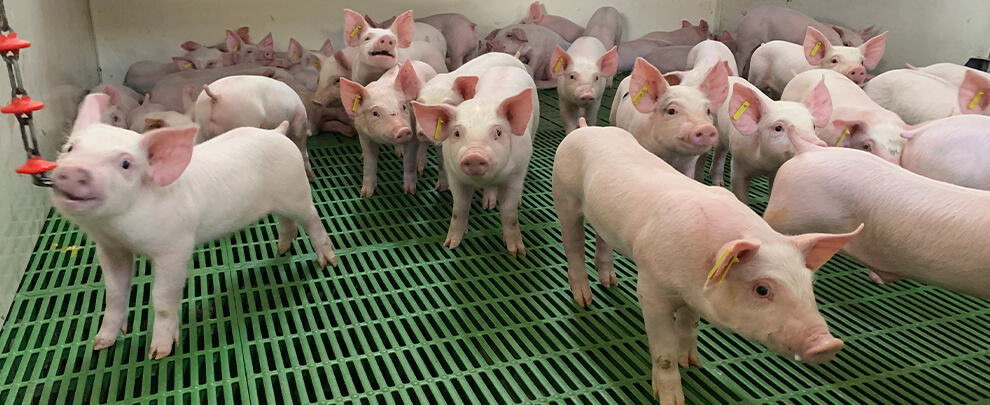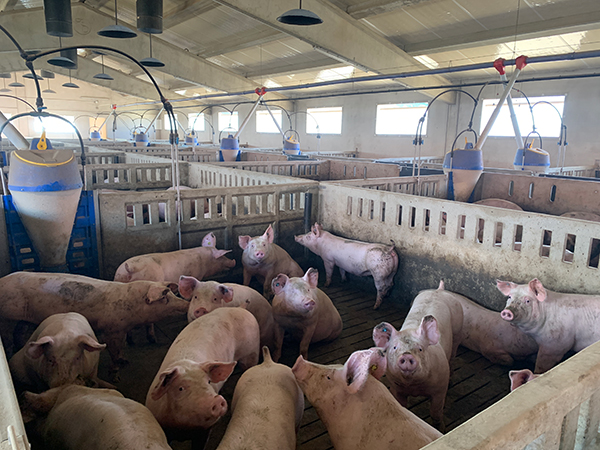Blog
Blog

R. Saltiveri: “We must insist on controlling the importation of piglets"
26 of March of 24 - News
After a 2022 marked by rising costs, 2023 has tipped the balance towards more positive results. Despite the positive aspect of this figure, production on our farms has decreased due to various health reasons, and animal imports have increased compared to other years. Trying to reverse this situation is one of the challenges for the sector, which, at the same time, must adapt to new legislation and take extreme precautions in the face of health threats. We discussed these issues with Rossend Saltiveri, head of pig farming at Unió de Pagesos.

Rossend Saltiveri, pork manager at Unió de Pagesos. Photo: R.S.
How would you define the evolution of the pork market during 2023?
We can say that, on balance, it has been positive. Even though we had more supply than demand at the beginning of the year and the price was low, from April to March, the situation began to change, and we stood at the highest price, 2.02€/kg live weight, which was maintained for 17 weeks. From September onwards, more or less, it fell again to values similar to those of the previous year. We have set price records and have closed the year with an average of 1.87€/kg.
Despite this record figure, the number of slaughters and tonnes of production fell slightly. What are the reasons for this setback?
We have experienced a decrease in the production of sows, and the number of sick leaves has increased. This is due to different health reasons, and we are reducing antibiotic use due to the adaptation process. We are in a period of adaptation, and we are moving towards a change that is not easy and that, as we can see, is having a clear impact on production. In the end, less production comes to the market through fewer kilos of meat. This year in Spain, the slaughter rate has been reduced by between 5% and 7%, and obviously, the market has noticed the result. To reverse this situation, we must consider biosecurity measures to prevent disease from entering the farms and provide optimal conditions for the animals in each production phase.
The volume of Spanish pork exports has also declined. What are the reasons?
The main reason continues to be the decline in production. Despite everything, we remain one of the leading exporters to European and Third World countries, with our produce being present in more than 100 countries. Although the volume has decreased, the value of exports has grown compared to previous years. In Europe, however, we export our products easily thanks to our competitiveness and prices. In addition, in countries such as the United States or Brazil, a decrease in production has allowed our product to access these markets easily. We have also benefited from the export ban caused by ASF in countries such as Germany and Belgium.
At the same time, imports of live animals have increased. How does this worry the industry?
From January to September 2023, imports reached 2,794 thousand heads, an increase of 19.3% compared to the same period in 2022. I think this is worrying and something we need to address. The goal we should set ourselves, and which is better for everyone, is to have all the production in the country and thus avoid health risks that may come from other countries. Balancing piglet production according to fattening capacity and demand is essential as an industry. To do this, we need to increase piglet production on sow farms, and the problem we have is that there are fewer and fewer sow farms. For all these reasons, we must control the transition process of reducing antibiotics and other health issues affecting us, such as PRRS, to achieve more stable productions and fill the fattening areas.

The new regulations for fattening farms are one of the challenges of the pig sector. Photo: Rotecna.
The main challenges remain addressing the challenges for this year and maintaining an ASF-free country status. What can we do in this regard?
The task of monitoring and control is very complex. Still, we must face it and insist on controlling the importation of piglets, avoiding the importation of infected areas and acting as quickly as possible in case of detection. However, importing piglets is a risk, not the only one. In recent years, ASF has evolved mainly through wild boar, and that we need to reduce the boar population is a fact. The regulations set eight wild boars per square kilometre, and this is something that in many places does not occur, and that should be complied with since, in the event of ASF arriving, it would be easier to control it. On the other hand, wild boars must be prevented from having access to food scraps from infected countries. The alert is maximum because the economic repercussions of ASF arriving could be dire.
The new regulations represent a new challenge for the industry regarding well-being. How can we cope?
The standard is written; we must comply with it and adapt the procedures for fattening pigs to the new regulations. The problem is that this adaptation will have limitations on many farms, and it will not be easy to scale them up or adapt them. For example, in Catalonia, where there is a high density of farms, adaptation is complicated because many were built when there were still no regulations regarding the distance between them. The new rules do not contemplate the reduction of this distance. This will sometimes force us to use our imagination to adapt without losing productive capacity.
Finally, at the environmental level, reducing emissions and applying the best available techniques (BAT) remains the sector's handicap. Where should we go from here?
It is a fact that we must move towards a reduction in emissions. On a new farm, the environmental conditions are set, and it is easier to comply with them. Still, on existing farms, we must adapt what we already have, and that is a significant economic challenge when the regulations are not yet apparent. We do not know if they will become more demanding as time passes. Therefore, deciding which BAT to install is a delicate matter because if we opt for one that adapts to a regulation that changes again in four days, our investment will be useless. This generates uncertainty regarding these investments, but we must invest and work on these issues to face the future and adapt to the new environmental requirements.






